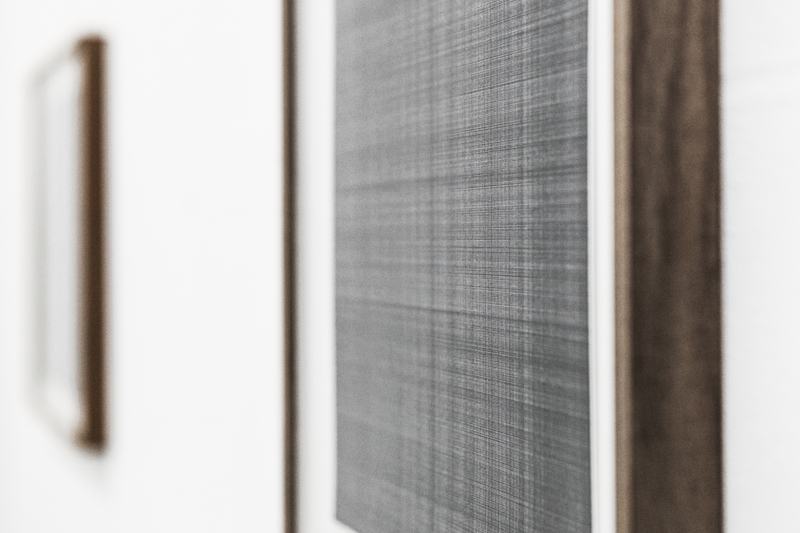Frank Weidenbach‘s drawings result from intersecting lines that fill the entire sheet format and form a close-meshed network of lines. These lines refer to nothing. They are -in orthogonal rigor- only what they are and form a structure, a surface, a textum.
They are lines that are drawn -close together- either with a ruler or as a freehand drawing.
In this contemplative, manual process, fluctuations in density and fluctuations in the fabric of lines occur inevitably or automatically, giving the drawings a quiet, tremulous intensity.
Ralf Werner‘s works often refer to historical architectural photographs or drawings. This is also the case with the group of works Oskolok, which refers to a Russian revolutionary architecture of the 1920s by Konstantin Melnikov. Here, Werner refers to a window type of Melnikov’s Moscow apartment and studio building.
On view were complex geometric sculptures made of wood and glass, which reflect the surrounding space in many broken ways and have condensed into an autonomous modular system.
Like Frank Weidenbach, Ralf Werner focuses his attention on one structure and entrusts everything to it. The window type he investigated, he used as a basis for an autonomous spatial-plastic system, reminiscent of both architecture and drawing.
The fabric (i.e. textum), the inner and outer structure, the logic of reduction of the works of Ralf Werner and Frank Weidenbach are related in some respects.
Photos: Frank Weidenbach & Ralf Werner
Despite all their obvious differences, they are united by their renunciation of ingenious inventiveness, their preference for precise observation, and the uncompromising nature of their methods.






